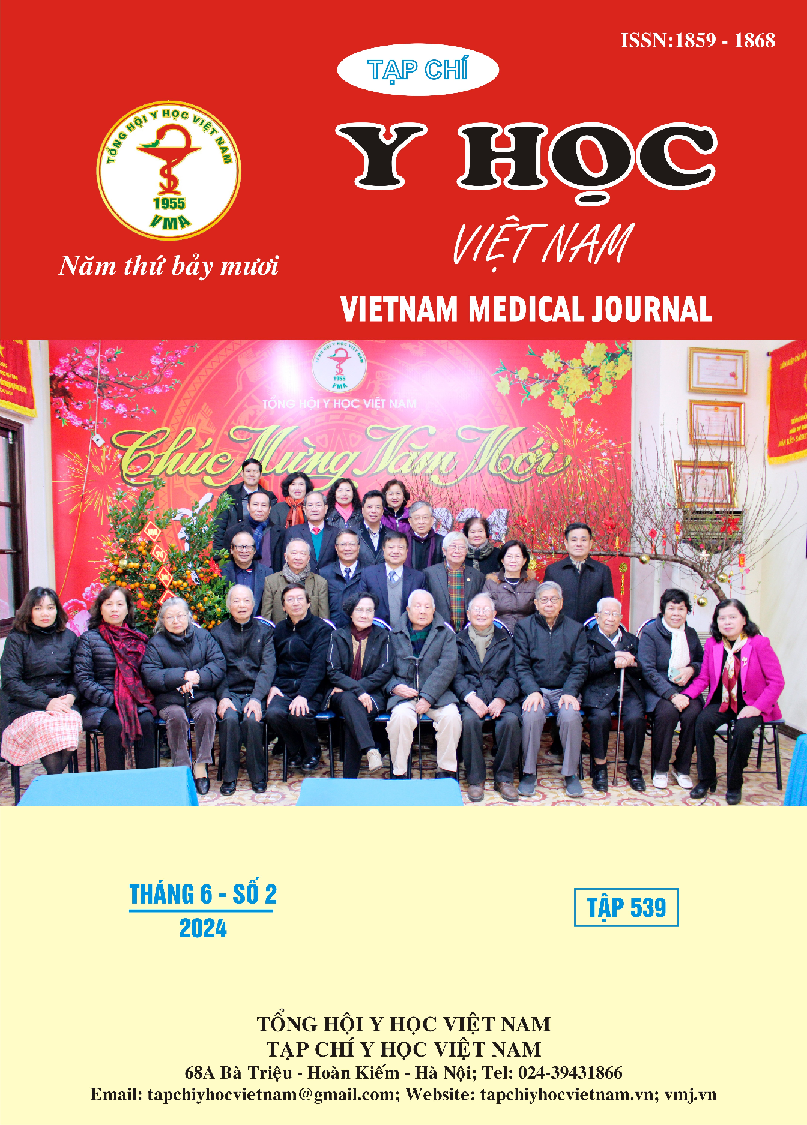STUDYING THE RELATIONSHIP OF FATTY LIVER PARAMETERS ON FIBROSCAN WITH ANTHROPOMETRIC, BLOOD SUGAR, AND BLOOD FAT CHARACTERISTICS IN PATIENTS WITH TYPE 2 DIABETES
Main Article Content
Abstract
Objective: To investigate the correlation between the level of liver fat with anthropometric indicators, blood sugar, and blood fat in patients with type 2 diabetes. Subjects and methods: Cross-sectional and prospective description of 142 type 2 diabetes patients undergoing Fibroscan ultrasound at Military Hospital 103 from April 2023 to February 2024. Results: The fatty liver index (CAP) had no relationship with age, HbA1c, and Triglyceride index. The CAP index in the female patient group (267.2 ± 62.3) increased higher than in the male patient group (238.1 ± 62.5). BMI and CAP have a moderate positive correlation with r = 0.316, p < 0.05. Fasting Blood Glucose and Cholesterol indexes have a slight positive correlation with CAP with r coefficients of 0.17 and 0.275, respectively. Conclusion: Fatty liver index on Fibroscan is related to BMI parameters, gender, fasting blood glucose, and blood cholesterol.
Article Details
Keywords
Fatty liver, Fibroscan, Type 2 diabetes.
References
2. Mikolasevic Ivana, Orlic Lidija, Franjic Neven et al. "Transient elastography (FibroScan®) with controlled attenuation parameter in the assessment of liver steatosis and fibrosis in patients with nonalcoholic fatty liver disease-Where do we stand?", World journal of gastroenterology. 2016; 22(32), pp. 7236.
3. Trần Thị Khánh Tường, Phạm Quang Thiên Phú. "Mối tương quan giữa mức độ nhiễm mỡ gan và xơ hóa gan ở bệnh nhân đái tháo đường típ 2 bị bệnh gan nhiễm mỡ không do rượu", Tạp chí y học Việt Nam. 2020; 488(1), pp. 21 - 25.
4. Kwok Raymond, Choi Kai Chow, Wong Grace Lai-Hung et al. "Screening diabetic patients for non-alcoholic fatty liver disease with controlled attenuation parameter and liver stiffness measurements: a prospective cohort study", Gut. 2015;pp. 2015-309265.
5. Karlas Thomas, Petroff David, Sasso Magali et al. (2017), "Individual patient data meta-analysis of controlled attenuation parameter (CAP) technology for assessing steatosis", Journal of hepatology, 66(5), pp. 1022-1030.
6. Hảo Lê Thị Minh (2023), "Nghiên cứu đặc điểm độ đàn hồi và mức độ nhiễm mỡ gan bằng siêu âm Fibroscan ở người có hội chứng chuyển hóa", Luận văn chuyên khoa cấp II, Học viện Quân Y.


